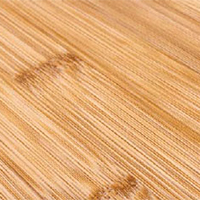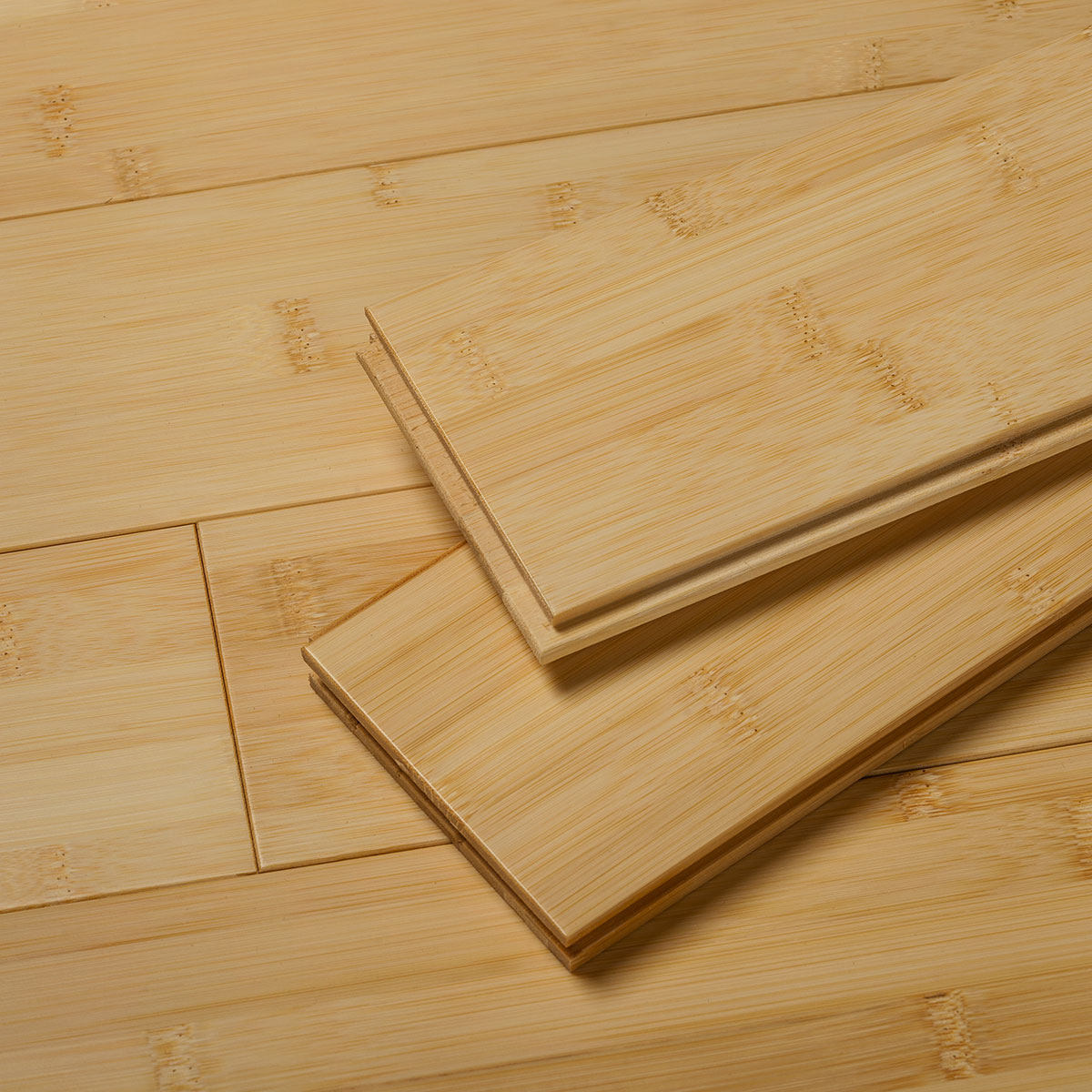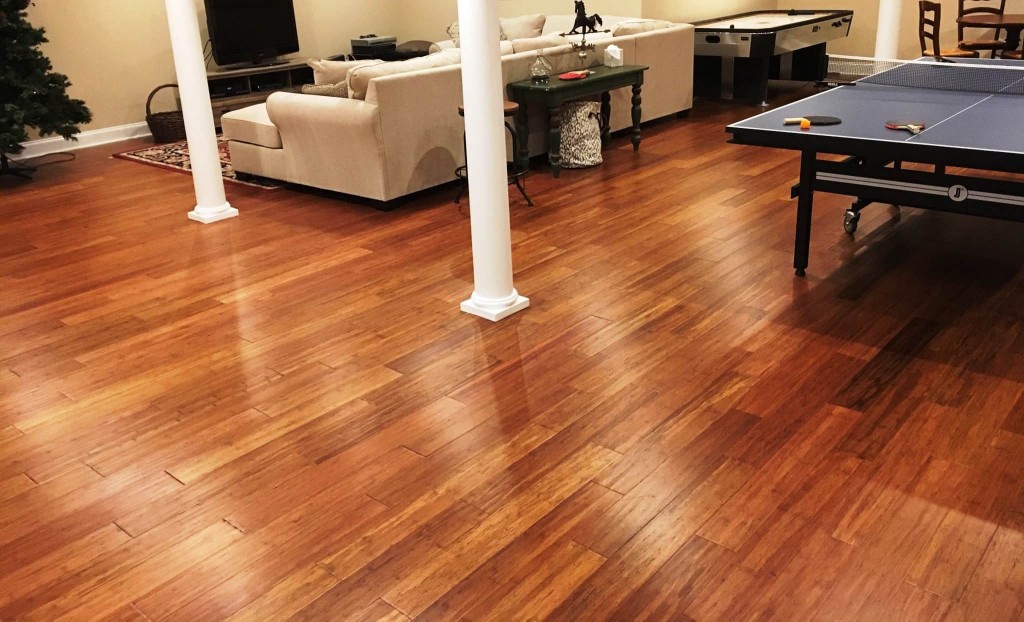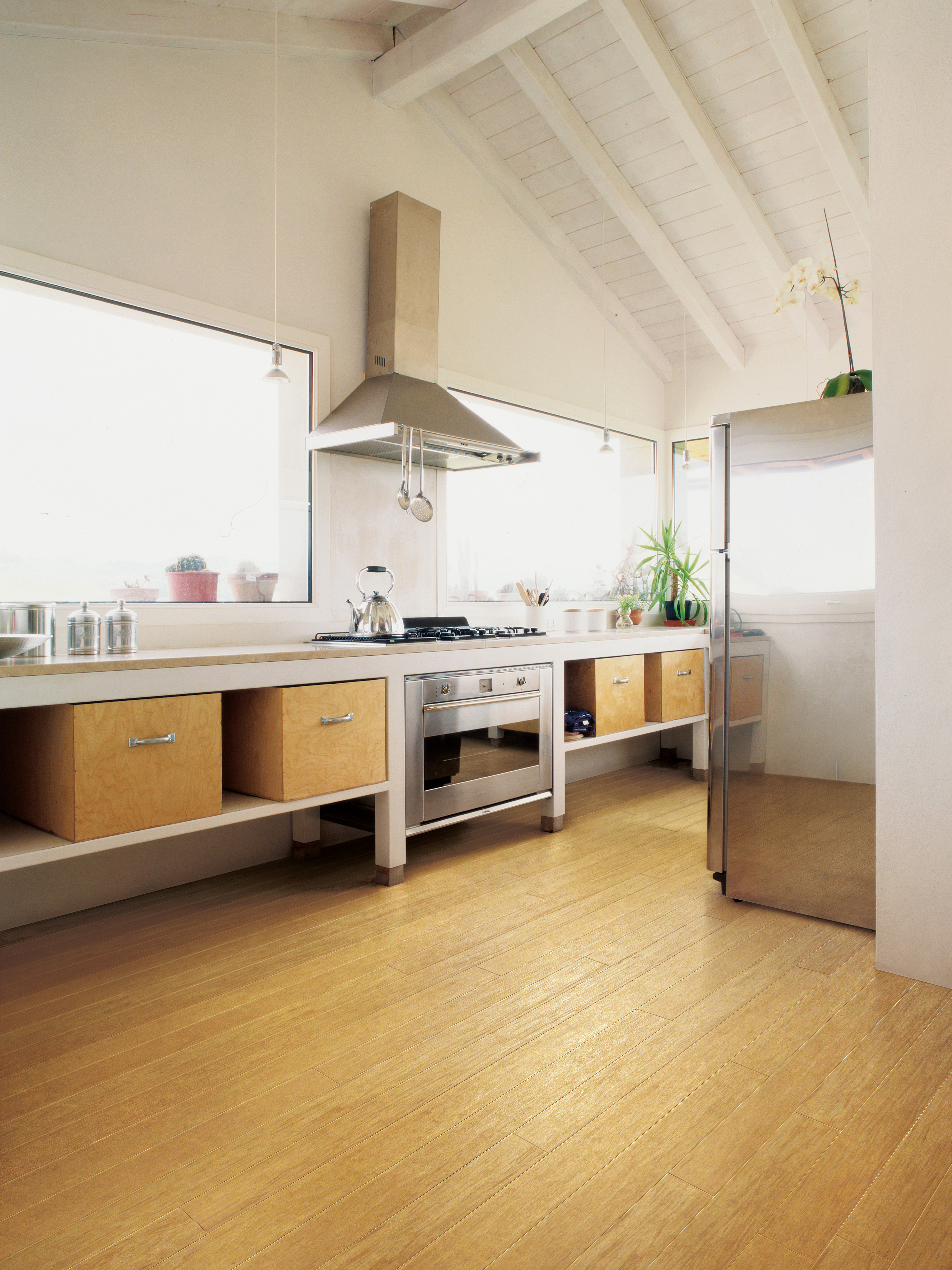Bamboo’s Natural Moisture Characteristics
Bamboo, unlike traditional hardwoods, is a type of grass. Its structure is inherently different, making it unique in how it interacts with moisture. Bamboo has a high starch content, which can attract moisture, making it more susceptible to fluctuations in humidity. This characteristic is essential to consider when installing bamboo flooring, as it can affect the stability and longevity of the floor.
The natural moisture content of bamboo varies depending on its species and the environment where it is harvested. Typically, freshly cut bamboo can have a moisture content ranging from 50% to 70%. This high moisture level must be reduced to around 6-12% through a drying process before it can be used for flooring. Proper drying ensures that the bamboo is stable and less likely to warp or crack once installed.
Another critical aspect of bamboo’s moisture characteristics is its hygroscopic nature. This means that bamboo readily absorbs and releases moisture from its surrounding environment. As humidity levels change, bamboo will expand and contract. Understanding this property is crucial for maintaining the integrity of bamboo flooring, especially in regions with significant seasonal changes in humidity.
Bamboo’s cell structure contributes to its moisture behavior. The cells are elongated and have a high silica content, which makes the material hard and resistant to water penetration on the surface. However, the internal cell walls can still absorb moisture, leading to expansion and contraction. This dual characteristic requires careful consideration during the manufacturing and installation process.
The density of bamboo also plays a role in its moisture management. Denser bamboo varieties tend to have a lower rate of moisture absorption compared to less dense varieties. This factor can influence the choice of bamboo species for flooring, depending on the local climate and expected humidity levels.
Finally, the processing method of bamboo flooring impacts its moisture characteristics. Engineered bamboo, which is made by bonding bamboo strands or fibers together, tends to be more dimensionally stable than solid bamboo planks. The adhesives used in engineered bamboo can also act as a moisture barrier, further enhancing its performance in humid environments.

Importance of Acclimation Before Installation
Acclimation is a crucial step before installing bamboo flooring. It allows the bamboo to adjust to the humidity and temperature conditions of the installation environment, reducing the risk of post-installation expansion or contraction. Skipping this step can lead to significant issues such as warping, buckling, or gaps between planks.
The acclimation process involves storing the bamboo flooring in the room where it will be installed for a specific period, typically ranging from 72 hours to a week. During this time, the bamboo should be laid out flat and the boxes opened to expose the planks to the air. This practice ensures that the bamboo reaches equilibrium moisture content (EMC) with the surrounding environment.
Monitoring the room’s temperature and humidity levels during acclimation is essential. Ideally, the room should have a stable humidity level between 40-60% and a temperature range of 60-80°F. These conditions help the bamboo adjust properly without undergoing extreme moisture absorption or loss, which can cause structural changes.
Using a moisture meter to check the moisture content of the bamboo planks before and after acclimation is recommended. The goal is to ensure that the moisture content of the bamboo flooring is within 2-4% of the subfloor’s moisture content. This similarity helps prevent moisture imbalances that could lead to flooring issues later.
Acclimation is particularly important in areas with significant climate variations or in newly constructed buildings where moisture levels might still be stabilizing. Buildings that undergo seasonal changes in humidity levels can also benefit from an extended acclimation period to ensure the bamboo flooring can withstand these fluctuations without damage.
Failure to properly acclimate bamboo flooring can result in costly repairs and replacements. Warped or buckled floors can disrupt the aesthetics and functionality of the space, necessitating time-consuming and expensive fixes. Investing time in the acclimation process is a proactive measure that ensures a smooth and durable flooring installation.
Ideal Moisture Content for Bamboo Flooring
Maintaining the ideal moisture content in bamboo flooring is essential for its durability and performance. Bamboo flooring should typically have a moisture content of 6-12%, which aligns with the moisture content of the subfloor and the ambient conditions of the installation site. This balance helps to prevent issues such as expansion, contraction, and warping.
The ideal moisture content can vary depending on the geographical location and indoor climate conditions. In humid regions, slightly lower moisture content at the time of installation may be preferable to accommodate potential moisture gain. Conversely, in arid regions, a slightly higher moisture content might be suitable to prevent excessive drying and shrinkage.
Using a moisture meter is a reliable method for measuring the moisture content of bamboo flooring. Pin-type moisture meters, which insert electrodes into the bamboo, and pinless moisture meters, which use electromagnetic sensors, are both effective tools. Regular checks should be performed during the acclimation process and before installation to ensure the bamboo has reached the appropriate moisture level.
The moisture content of the subfloor is equally important. Subfloors made of concrete, plywood, or other materials should have a moisture content that is within 2-4% of the bamboo flooring. This consistency helps to avoid moisture imbalances that can lead to structural problems. Moisture barriers or underlayment can be used to manage subfloor moisture levels.
Seasonal variations in indoor humidity can affect the moisture content of bamboo flooring. In winter, when indoor heating systems can dry out the air, bamboo flooring might lose moisture and contract. Conversely, in summer, higher humidity levels can cause bamboo to absorb moisture and expand. Maintaining consistent indoor humidity levels through humidifiers or dehumidifiers can help mitigate these effects.
Professional installers often use acclimation charts and guidelines based on local climate data to determine the ideal moisture content for bamboo flooring. These resources can provide valuable insights into the appropriate moisture levels for specific regions and installation environments. Adhering to these recommendations ensures that the bamboo flooring performs optimally and has a long lifespan.
Factors Affecting Moisture Levels in Bamboo Floors
Several factors influence the moisture levels in bamboo floors, affecting their stability and performance. Understanding these factors can help in managing moisture-related issues and maintaining the integrity of the flooring.
The local climate is a primary factor affecting moisture levels in bamboo floors. Regions with high humidity, such as coastal areas, can cause bamboo flooring to absorb more moisture, leading to expansion and potential warping. Conversely, arid regions can cause bamboo to lose moisture and contract, creating gaps between planks. Seasonal changes also play a role, with varying humidity levels impacting the flooring throughout the year.
Indoor climate control is another significant factor. Heating and cooling systems, as well as the use of humidifiers and dehumidifiers, can influence the moisture content of bamboo flooring. Maintaining a consistent indoor humidity level between 40-60% helps to prevent extreme fluctuations in the bamboo’s moisture content, reducing the risk of expansion or contraction.
Subfloor moisture is critical in managing the overall moisture levels of bamboo floors. Subfloors made of concrete can retain moisture, which can seep into the bamboo flooring if not properly managed. Using moisture barriers or underlayment can help control the moisture transfer from the subfloor to the bamboo, ensuring a stable installation environment.
Ventilation within the building also impacts moisture levels. Poor ventilation can trap moisture, creating a humid environment that affects the bamboo flooring. Adequate ventilation helps to regulate humidity levels, preventing the buildup of moisture that can cause the bamboo to expand and warp.
Water sources within the building, such as plumbing leaks or high-moisture areas like kitchens and bathrooms, can contribute to increased moisture levels in bamboo flooring. Ensuring that these areas are properly sealed and that any leaks are promptly addressed can prevent moisture-related damage to the flooring.
The type of bamboo flooring and its manufacturing process also influence moisture levels. Engineered bamboo flooring, which uses adhesives and layers, tends to be more resistant to moisture fluctuations compared to solid bamboo planks. The quality of the manufacturing process, including proper drying and treatment of the bamboo, plays a crucial role in determining its moisture stability.
Methods for Measuring Moisture in Bamboo Flooring
Accurate measurement of moisture in bamboo flooring is essential for preventing moisture-related issues. Several methods are commonly used to assess the moisture content of bamboo flooring, ensuring it is suitable for installation and long-term use.
Pin-type moisture meters are widely used tools for measuring moisture content in bamboo flooring. These devices have two metal pins that are inserted into the bamboo, measuring the electrical resistance between them. The resistance is then converted into a moisture content reading. Pin-type meters are effective but can leave small holes in the flooring, which may be undesirable for finished surfaces.
Pinless moisture meters offer a non-invasive alternative. These devices use electromagnetic sensors to measure moisture content without penetrating the bamboo surface. Pinless meters are particularly useful for finished floors as they do not cause any damage. They provide quick and accurate readings, making them a preferred choice for many installers and inspectors.
Oven-dry testing is a laboratory method used for precise moisture measurement. A sample of bamboo is weighed and then dried in an oven at a specific temperature until it reaches a constant weight. The weight loss represents the moisture content. While this method is highly accurate, it is time-consuming and not practical for on-site testing.
Equilibrium moisture content (EMC) charts are also used to estimate the moisture content of bamboo flooring. These charts provide moisture content values based on the relative humidity and temperature of the environment. By comparing the current environmental conditions to the EMC chart, installers can estimate whether the bamboo flooring is within the acceptable moisture range.
Thermal imaging cameras can detect moisture-related issues in bamboo flooring by capturing temperature variations. Moist areas tend to have different thermal properties compared to dry areas, allowing the identification of moisture problems that may not be visible to the naked eye. This method is particularly useful for detecting hidden moisture issues behind walls or under flooring.
Combining multiple methods often yields the best results. For instance, using both pin-type and pinless moisture meters can provide a more comprehensive understanding of the bamboo flooring’s moisture content. Regular monitoring throughout the acclimation and installation process helps ensure that the bamboo flooring remains within the optimal moisture range, reducing the risk of moisture-related problems.
Effects of High Humidity on Bamboo Floors
High humidity levels can have a significant impact on bamboo floors, potentially causing a range of problems. Bamboo, being a hygroscopic material, absorbs moisture from the air, which can lead to expansion and deformation if the humidity is excessively high.
One of the primary effects of high humidity on bamboo floors is swelling. When bamboo absorbs moisture, it expands, which can cause the planks to push against each other. This pressure can result in buckling, where the flooring lifts or forms ridges. Buckling not only affects the aesthetics of the floor but also its structural integrity, making it uncomfortable and potentially unsafe to walk on.
Cupping is another issue associated with high humidity. This occurs when the edges of bamboo planks rise higher than the center, creating a concave shape. Cupping is typically a result of the bottom of the planks absorbing more moisture than the top, often due to high humidity levels combined with a moisture-retaining subfloor. This condition can weaken the bamboo and make it more prone to further damage.
High humidity can also lead to the growth of mold and mildew on bamboo floors. The organic nature of bamboo provides a suitable environment for mold spores to thrive when moisture levels are elevated. Mold and mildew not only damage the flooring but also pose health risks to occupants, particularly those with respiratory issues or allergies.
Prolonged exposure to high humidity can degrade the adhesives used in engineered bamboo flooring. The increased moisture can weaken the bond between the bamboo layers, leading to delamination. This separation of layers compromises the flooring’s stability and durability, necessitating repairs or replacement.
Warping is another consequence of high humidity. Warping occurs when bamboo planks bend or twist out of shape due to uneven moisture absorption. This deformation can disrupt the smooth surface of the flooring and create gaps between planks. Warped flooring is not only unsightly but can also be difficult to repair, often requiring the replacement of affected planks.
To mitigate the effects of high humidity, it is crucial to maintain indoor humidity levels within the recommended range of 40-60%. Using dehumidifiers and ensuring proper ventilation can help manage moisture levels in the environment. Additionally, choosing high-quality bamboo flooring with adequate moisture resistance can reduce the risk of damage in high-humidity areas.
Consequences of Low Humidity on Bamboo Flooring
Low humidity levels can be just as damaging to bamboo flooring as high humidity. When the air is too dry, bamboo flooring can lose moisture, leading to various structural and aesthetic problems. Understanding these consequences is vital for maintaining the integrity and appearance of bamboo floors.
Shrinkage is a common issue associated with low humidity. As bamboo flooring loses moisture, the planks contract, creating gaps between them. These gaps can be unsightly and may collect dirt and debris, making the floor harder to clean. In severe cases, the gaps can become large enough to affect the floor’s stability and create tripping hazards.
Low humidity can also cause the bamboo flooring to crack. The loss of moisture can make the bamboo brittle, leading to surface cracks that mark the floor’s appearance. Cracking can also occur at the joints and edges of the planks, compromising the structural integrity of the flooring. These cracks are often irreversible and may require replacing the affected planks.
Crowning is a phenomenon where the center of bamboo planks becomes higher than the edges, creating a convex shape. This condition is typically a result of the flooring losing moisture from the top surface faster than from the bottom, often due to low humidity levels. Crowning not only affects the aesthetics of the floor but also its smoothness and comfort underfoot.
Low humidity can affect the adhesives used in engineered bamboo flooring. When the air is too dry, the adhesives can become brittle and lose their bonding strength. This weakening can lead to delamination, where the layers of the flooring separate. Delamination reduces the flooring’s durability and can result in the need for costly repairs or replacement.
Another consequence of low humidity is increased static electricity. Dry air can cause bamboo flooring to build up static charge, leading to minor electric shocks when walking across the floor. This static buildup can be uncomfortable and may also attract more dust and dirt to the floor’s surface, making it harder to maintain.
Maintaining an indoor humidity level of 40-60% is crucial for preventing the adverse effects of low humidity on bamboo flooring. Using humidifiers during dry seasons, especially in winter when heating systems can reduce indoor humidity, can help preserve the moisture content of the bamboo. Proper acclimation of the flooring before installation and using quality adhesives can also mitigate the risks associated with low humidity.
Seasonal Moisture Fluctuations and Their Impact
Seasonal moisture fluctuations can significantly impact bamboo flooring, leading to various challenges in maintaining its stability and appearance. Understanding how different seasons affect bamboo’s moisture content is crucial for managing these changes and ensuring the longevity of the flooring.
In regions with distinct seasonal changes, humidity levels can vary greatly between summer and winter. During the summer, higher humidity levels can cause bamboo flooring to absorb moisture and expand. This expansion can lead to issues such as buckling, where the planks lift or create ridges, and cupping, where the edges of the planks rise higher than the center. Both conditions affect the floor’s aesthetics and structural integrity.
Conversely, in the winter, indoor heating systems can dry out the air, leading to low humidity levels. This dryness can cause bamboo flooring to lose moisture and contract, resulting in gaps between planks. Shrinkage can also lead to cracking, particularly in more brittle bamboo varieties. These changes can create an uneven floor surface and compromise the overall stability of the flooring.
Managing seasonal moisture fluctuations requires proactive measures. One effective approach is to use humidifiers during the winter to maintain indoor humidity levels within the recommended range of 40-60%. Similarly, dehumidifiers can be used in the summer to reduce excess moisture and prevent the bamboo from absorbing too much humidity.
Proper installation techniques can also help mitigate the effects of seasonal moisture fluctuations. Allowing sufficient space for expansion and contraction during installation is essential. This can be achieved by leaving expansion gaps around the perimeter of the room and at fixed objects such as columns and thresholds. These gaps provide room for the bamboo to expand and contract without causing damage.
Regular monitoring of indoor humidity levels is crucial throughout the year. Using a hygrometer to measure the humidity can help identify when conditions are outside the optimal range. This awareness allows homeowners to take timely actions, such as adjusting humidifiers or dehumidifiers, to maintain stable moisture levels in the flooring.
Seasonal acclimation of bamboo flooring before installation is also important. Acclimating the bamboo to the indoor environment for a longer period, considering seasonal variations, can help the flooring adjust to the expected moisture levels. This practice reduces the risk of sudden moisture-related changes after installation.
Choosing the right type of bamboo flooring can also make a difference in managing seasonal moisture fluctuations. Engineered bamboo flooring, which consists of multiple layers bonded together, tends to be more dimensionally stable compared to solid bamboo planks. This stability makes engineered bamboo more resistant to seasonal changes in humidity.
Proper Subfloor Preparation for Moisture Control
Proper subfloor preparation is essential for controlling moisture and ensuring the long-term performance of bamboo flooring. A well-prepared subfloor provides a stable foundation and helps prevent moisture-related issues such as warping, buckling, and mold growth.
The first step in subfloor preparation is assessing the moisture content of the subfloor. Using a moisture meter, the subfloor’s moisture levels should be measured to ensure they are within the acceptable range for bamboo flooring installation. For concrete subfloors, the moisture content should be below 4%, while for plywood subfloors, it should be within 6-12%. Ensuring the subfloor is dry prevents excess moisture from seeping into the bamboo flooring.
Moisture barriers play a crucial role in subfloor preparation. For concrete subfloors, a polyethylene plastic sheet or liquid-applied moisture barrier can be used to prevent moisture from rising into the bamboo flooring. For wooden subfloors, a vapor barrier paper or an underlayment with moisture-resistant properties can be installed. These barriers help create a protective layer that keeps the subfloor’s moisture from affecting the bamboo.
Proper leveling of the subfloor is another critical aspect. The subfloor should be smooth, clean, and level to within 3/16 inch over a 10-foot span. Any unevenness or debris on the subfloor can cause the bamboo flooring to lay unevenly, leading to gaps, squeaks, and other issues. Sanding down high spots and filling in low spots with a leveling compound can help achieve a flat surface.
Addressing any existing moisture issues in the subfloor is essential before installation. For concrete subfloors, this might involve checking for cracks or leaks and repairing them. For wooden subfloors, it could mean replacing any damaged or rotten sections. Ensuring the subfloor is in good condition prevents future moisture problems that could compromise the bamboo flooring.
Acclimating the subfloor to the indoor environment is also important. This involves allowing the subfloor to adjust to the room’s temperature and humidity levels for a period before installing the bamboo flooring. This step helps ensure that both the subfloor and the bamboo are at equilibrium moisture content, reducing the risk of post-installation moisture issues.
Using a suitable underlayment can enhance moisture control and provide additional benefits. Underlayment materials such as cork or foam can act as moisture barriers while also offering sound insulation and cushioning. Choosing an underlayment that complements the bamboo flooring and installation environment can enhance the overall performance and comfort of the floor.
Moisture Barriers and Their Role in Installation
Moisture barriers are a crucial component in the installation of bamboo flooring, providing essential protection against moisture-related damage. These barriers help prevent moisture from seeping into the bamboo flooring from the subfloor or the surrounding environment, ensuring the floor remains stable and durable.
One of the primary types of moisture barriers is the polyethylene plastic sheet, commonly used with concrete subfloors. This sheet acts as a physical barrier, preventing moisture from the concrete from reaching the bamboo flooring. It is typically installed directly over the concrete, with seams overlapped and taped to create a continuous protective layer.
Liquid-applied moisture barriers offer an alternative to plastic sheets. These products are applied directly to the subfloor using a roller or brush, creating a seamless, waterproof membrane once cured. Liquid barriers are particularly useful for uneven subfloors, as they can fill in cracks and gaps, providing comprehensive moisture protection.
Vapor barrier papers are often used with wooden subfloors. These papers are installed between the subfloor and the bamboo flooring, preventing moisture from the subfloor from affecting the bamboo. Vapor barrier papers also help reduce the risk of mold and mildew growth by limiting moisture transfer.
Underlayments with moisture-resistant properties can serve as effective moisture barriers. These underlayments, made from materials such as cork or foam, are installed between the subfloor and the bamboo flooring. In addition to moisture protection, they offer benefits such as sound insulation and cushioning, enhancing the overall performance of the flooring.
Combining multiple moisture barriers can provide enhanced protection. For instance, using a polyethylene plastic sheet over a concrete subfloor and a moisture-resistant underlayment beneath the bamboo flooring can create a robust moisture defense system. This multi-layered approach is particularly useful in areas prone to high humidity or water exposure.
Proper installation of moisture barriers is essential for their effectiveness. Ensuring that seams are overlapped and taped and that the barrier extends up walls and around fixed objects, creates a continuous protective layer. Any gaps or breaches in the barrier can allow moisture to penetrate, undermining the protection it provides.
Related Posts:




:no_upscale()/cdn.vox-cdn.com/uploads/chorus_asset/file/19510473/04_bamboo_floor_0.jpg)






